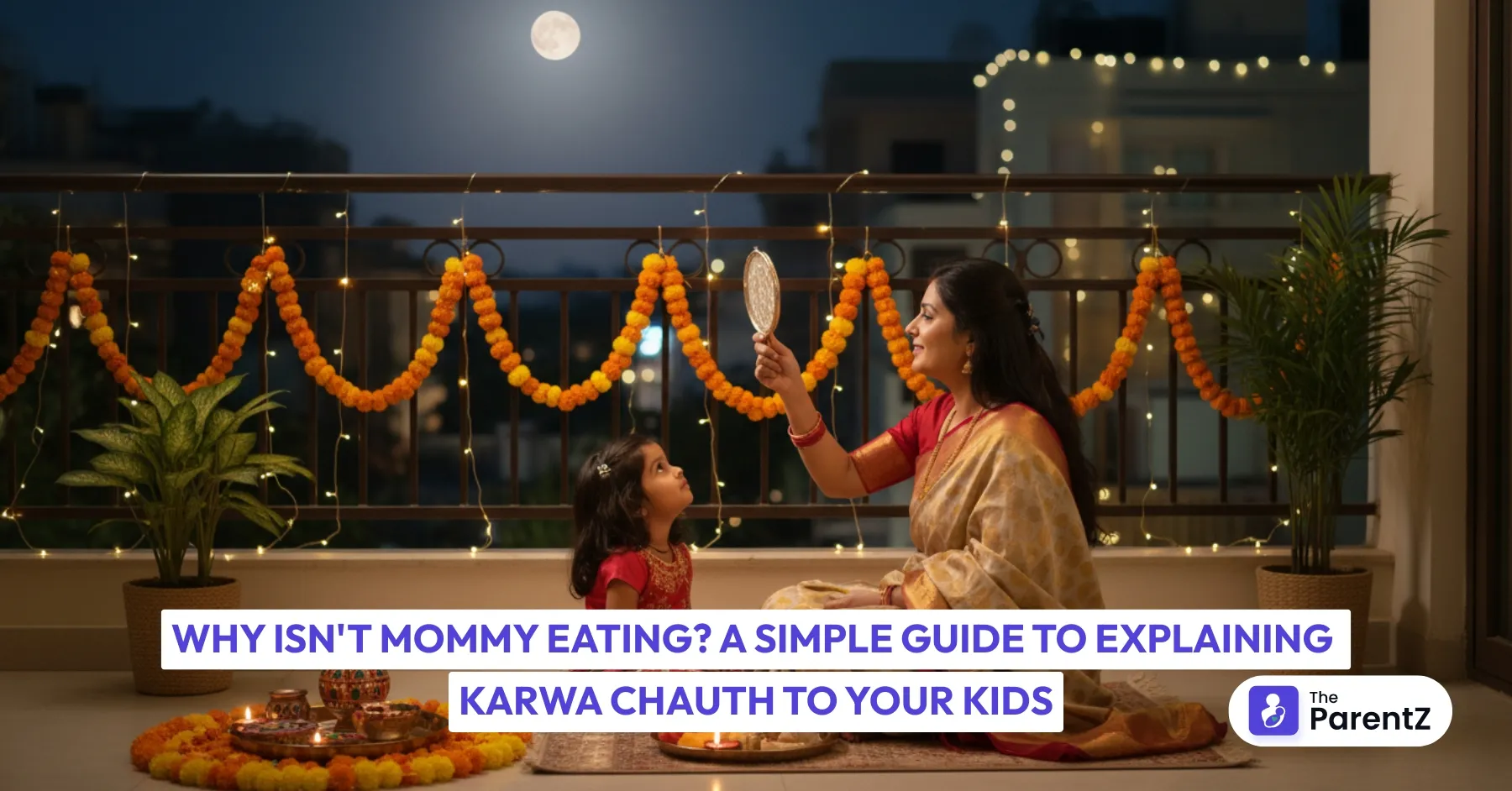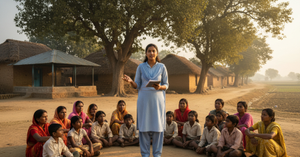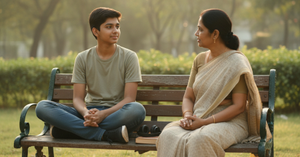“Mom, why aren’t you eating all day?”
That’s the question most moms hear on Karwa Chauth morning, right after preparing breakfast, lunch, and everyone’s favorite snacks! Kids notice everything, especially when their mother skips her meal (and even her water!). Karwa Chauth looks beautiful with its colorful outfits, glowing lamps, the moon, and the excitement of spotting it first, but children often wonder what it truly means.
So, today, let's break this down in a way that makes sense to curious young minds.
What Is Karwa Chauth?
Karwa Chauth is a festival where married women fast from sunrise to moonrise for the safety and long life of their husbands. The word Karwa means an earthen pot, and Chauth means the fourth day, because it is celebrated on the fourth day after the full moon in the month of Kartik.
On this day, women wake up early before sunrise, eat a meal called sargi, usually given by their mother-in-law, and then begin their day-long fast. No food. No water. Yes, not even a sip! It’s a powerful symbol of love, faith, and self-control.
By evening, the atmosphere turns festive. Moms and aunties get dressed in beautiful sarees or lehengas, light diyas, and gather for prayers. As the moon rises, everyone rushes to the balcony or terrace to spot it. Then comes the special moment: viewing the moon through a sieve, offering argya (water) to it with a karwa, and finally breaking the fast.
How Did This Festival Begin?
Many stories surround Karwa Chauth, each showing how love and devotion can overcome even death. The most popular one is about Queen Veeravati.
Queen Veeravati was the only sister among seven brothers. On her first Karwa Chauth after marriage, she stayed at her parents’ home and observed the day-long fast. By evening, she became weak and fainted from hunger and thirst.
Her brothers couldn’t bear to see her suffer and decided to trick her. They climbed a nearby hill, lit a fire, and used a mirror to make it look like the moon had risen. Believing it was moonrise, Veeravati broke her fast.
Just then, she received tragic news: her husband (the king) had died. Heartbroken, she began her journey to her husband’s palace. On the way, she met Goddess Parvati, who explained that her husband’s death had occurred because she had broken her fast after seeing a false moon. However, moved by her devotion, Goddess Parvati granted her mercy; if Veeravati continued to fast every year with complete faith, her husband would be revived.
Veeravati observed the fast with great devotion, and eventually, her husband came back to life. Hence, fasting on Karwa Chauth symbolizes a wife’s love and strength of faith in ensuring the long life and well-being of her husband.
There’s More Than One Story!
Kids love stories, so here are a few more short ones to share:
- Karwa’s Bravery: Once, a woman named Karwa tied a crocodile with a piece of thread to protect her husband and pleaded to Lord Yama (the god of death) not to take his life. Her courage and devotion were so powerful that Yama spared her husband. This is why women worship Goddess Karwa for protecting their partners.
- Savitri and Satyavan: Savitri followed Yama until he returned her husband’s soul, using her intelligence and love to outwit death itself.
- Draupadi’s Faith: When Arjun was away at war, Draupadi kept a fast like Goddess Parvati’s to pray for her husband’s long life. The result? Victory and blessings for her family.
Each story carries the same message that when love is strong, no challenge is too big.
Why Is the Moon So Special?
Children often notice that almost every Indian festival includes the moon and for good reason!
On Karwa Chauth night, the moon plays a special role. It is considered sacred and calming. Just as it glows softly and beautifully even in darkness, our relationships also shine when nurtured with care, patience, and dedication.
When women offer water (called argya) to the moon, they’re praying to keep their homes happy, their families healthy, and their bonds strong. The moon’s gentle light symbolizes coolness, purity, and endless love, just like a mother’s.
How to Explain the Fasting Part to Kids
Fasting might sound strange to children. “But why would Mom stay hungry all day?” they ask.
You can explain it this way:
- It’s not about hunger; it’s about the heart. Mommy isn’t starving herself; she’s choosing to spend the day remembering and praying for her family’s happiness.
- Fasting teaches patience and discipline. Just like kids sometimes skip playtime to finish their homework, moms do this to focus on prayers and gratitude.
- In modern times, some fathers fast with their wives, too! It’s a lovely way to show that love and respect go both ways.
So, when Mommy says she’s not eating, it’s because she’s celebrating love in her quiet, strong way.
The Evening Magic: Waiting for the Moon
Ask any child what they like most about Karwa Chauth, and you’ll hear, “Waiting for the moon!” The rooftop becomes a playground of curiosity. Children keep peeping through the sieve, searching for the shiny white circle. As soon as it appears, everyone cheers.
The mother looks at the moon through the sieve, then at her husband; it’s a moment filled with emotion, devotion, and smiles. The fast ends with prasad, water, a light meal, and the warmth of the family gathered together.
It’s more than just a ritual; it’s a reminder of love that is silent yet powerful, like the moonlight itself.
Teaching Kids to Appreciate the Tradition
Karwa Chauth gives families a lovely opportunity to talk about tradition, not as something old, but as something beautifully meaningful. Here’s how parents can make it relatable for kids:
- Let children help decorate the puja thali with diyas and flowers.
- Tell them the stories behind the festival before bedtime.
- Encourage curiosity; answer their “why” questions gently and proudly.
- Explain that while today’s couples share responsibilities equally, keeping traditions alive teaches gratitude and care.
When children understand the why, they naturally learn to respect the how.
Conclusion
In today’s world of hurry and screens, Karwa Chauth brings families together under one calm sky. It’s not just about fasting or rituals; it’s about reminding each other of how deeply we care for one another.
So next time your child asks, “Why isn’t Mommy eating today?” you can smile and say, “Because Mommy’s love is so strong, even the moon waits for her.”








Be the first one to comment on this story.